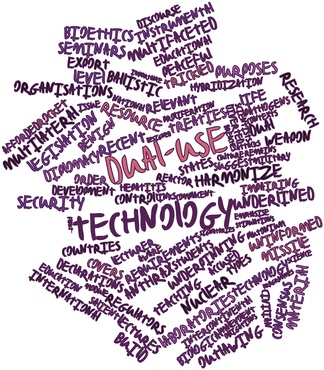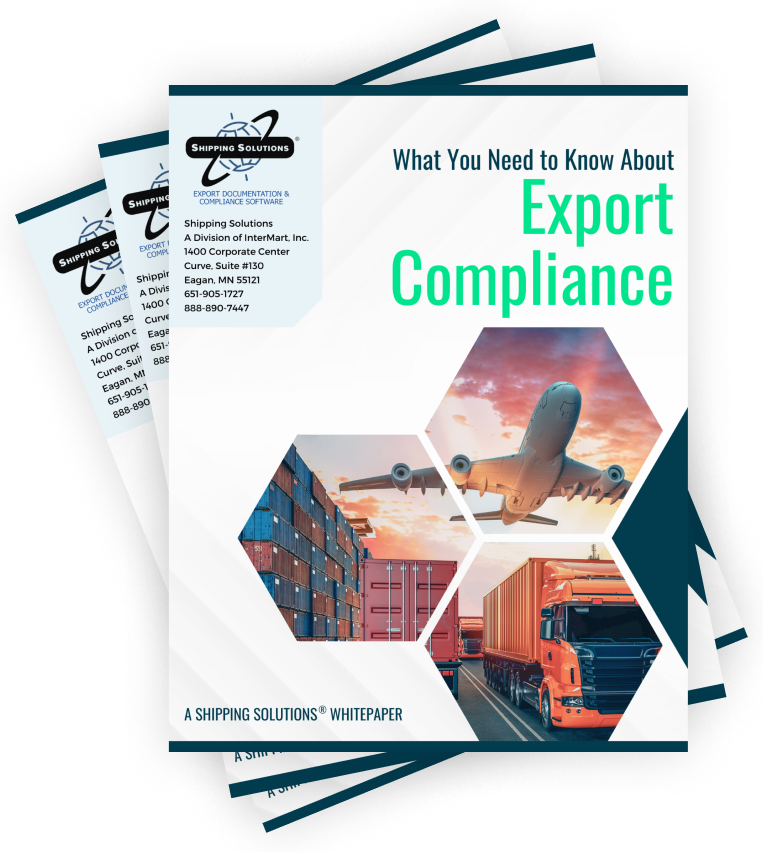The International Trade Blog Export Compliance
Export License Requirements: Understanding Dual-Use Products
On: September 24, 2018 | By:  Catherine J. Petersen |
4 min. read
Catherine J. Petersen |
4 min. read
 A customer service representative recently approached me at a seminar and told me about a phone conversation she had with one of her U.S. customers who was looking to export a product they sell. Her customer asked if she had an ECCN for her product since it seemed to be a dual use item that might need an export license.
A customer service representative recently approached me at a seminar and told me about a phone conversation she had with one of her U.S. customers who was looking to export a product they sell. Her customer asked if she had an ECCN for her product since it seemed to be a dual use item that might need an export license.
She needed help understanding what her customer meant.
Dual Use Items
According to the Export Administration Regulations (EAR), part 730.3, "a 'dual use' item is one that has civil applications as well as terrorism and military or weapons of mass destruction (WMD)-related applications." In other words, this includes items that were manufactured for civilian use but which could be used or be modified to be used for terrorism or military purposes.
Therefore, items that are subject to the EAR include purely civilian items, items with both civil and military application, items with terrorism or potential WMD-related applications, and items that are exclusively used for military purposes but are not controlled under the International Traffic in Arms Regulations (ITAR).
The Bureau of Industry and Security (BIS) is the agency responsible for administering export control laws and safeguarding U.S. national interests, including dual-use technologies.
The BIS maintains controls on exports from the United States and re-exports of U.S.-origin items from foreign destinations. The controls are on strategic commodities and technical data to prevent their diversion to hostile countries.
Export Control Regimes
The United States participates in four multilateral control regimes that enhance the effectiveness of its export controls:
- Wassenaar Arrangement (i.e. conventional arms and related dual use items),
- Nuclear Suppliers Group,
- Australia Group (e.g. chemical precursors and biological agents), and
- Missile Technology Control Regime.
BIS implements U.S. foreign policy controls such as crime control, antiterrorism and regional stability and is responsible for export controls on terrorist countries. BIS also administers export controls to protect the United States from the adverse impact of the unrestricted export of commodities in short supply (e.g. some crude oil, other petroleum products, and unprocessed western red cedar).
BIS partners with a number of agencies and laboratories including:
- Oak Ridge National Laboratory (ORNL);
- Argonne National Laboratory Policies & Procedures publishes a Guide to Export;
- Department of State (DOS) administers the The International Traffic in Arms Regulations;
- Treasury Department, Office of Foreign Assets (OFAC) regulates broad controls and embargo transactions with certain foreign countries;
- U.S. Nuclear Regulatory Commission (NRC) regulates the export and re-export of technology related to the production of special nuclear materials (10 CFR 110);
- Department of Energy regulations control the export and re-export of technology related to the production of special nuclear materials;
- Patent and Trademark Office (PTO) regulations provide for the export to a foreign country of unclassified technology in the form of a patent application or an amendment, modification or supplement thereto or division thereof (37 CFR 5);
- U.S. Customs and Border Protection (CBP) is responsible for (1) monitoring exports at U.S. borders; (2) collecting duties (on imports); and (3) clearing, delaying, seizing or denying entry/exit of people or commodities. Customs may also check the paperwork on people and commodities returning to the U.S.
Fictional Case Study
Gumbo Rubber Company, 65531 Gumbo Road, Fremont, California, regularly exports a variety of rubber insulators and connectors for electric fencing, power lines, and facilities. Some of their customers request specific modifications. These customers operate nuclear power plants.
If the item is to be used in a nuclear power plant, then the exporter must investigate the regulations that cover dual use items. These would include, but may not be limited to, the Export Administration Regulations, regulations under the control of the U.S. Nuclear Regulatory Commission, and the Department of Energy regulations.
It is important for each firm to develop an export compliance procedure and policy that all employees will follow to avoid violation of the regulations.
Like what you read? Subscribe today to the International Trade Blog to get the latest news and tips for exporters and importers delivered to your inbox.
This article was first published in May 2003 and has been updated to include current information, links and formatting.

About the Author: Catherine J. Petersen
In 1992, Catherine Petersen founded C J Petersen & Associates, LLC, a research, instruction and consulting firm located in St. Paul, Minnesota, USA. She has designed documentation and procedure manuals for exporters and has authored/co-authored five books.
Ms. Petersen has had day-to-day practical experience at a freight forwarder, a trading company, and an ocean carrier; she has been active in international business since 1980. Her background led her to develop C J Petersen & Associates, LLC, which is a collaborative consultancy that works with clients to identify compliance gaps and to resolve them. Ms. Petersen retired in 2022.



